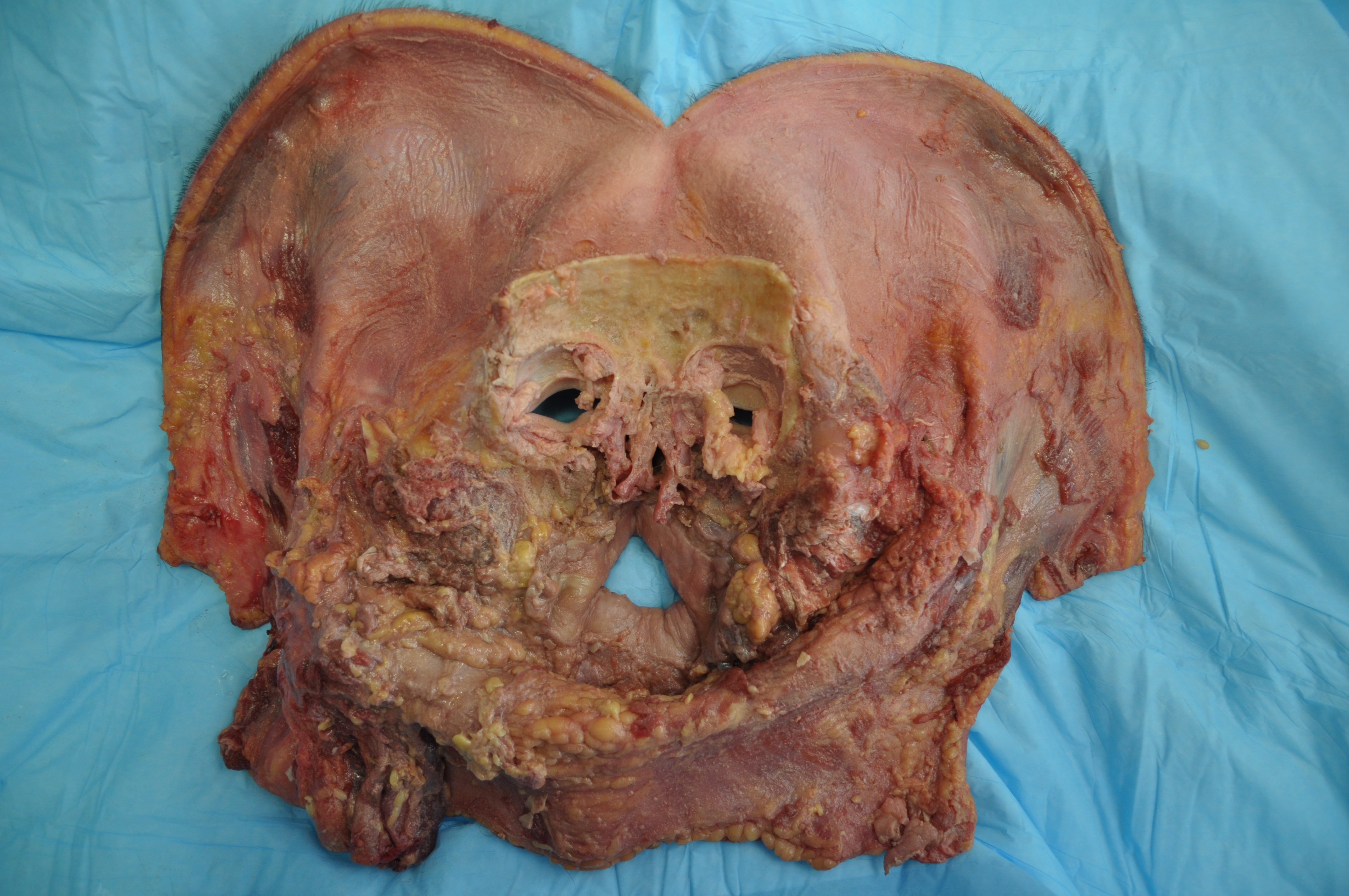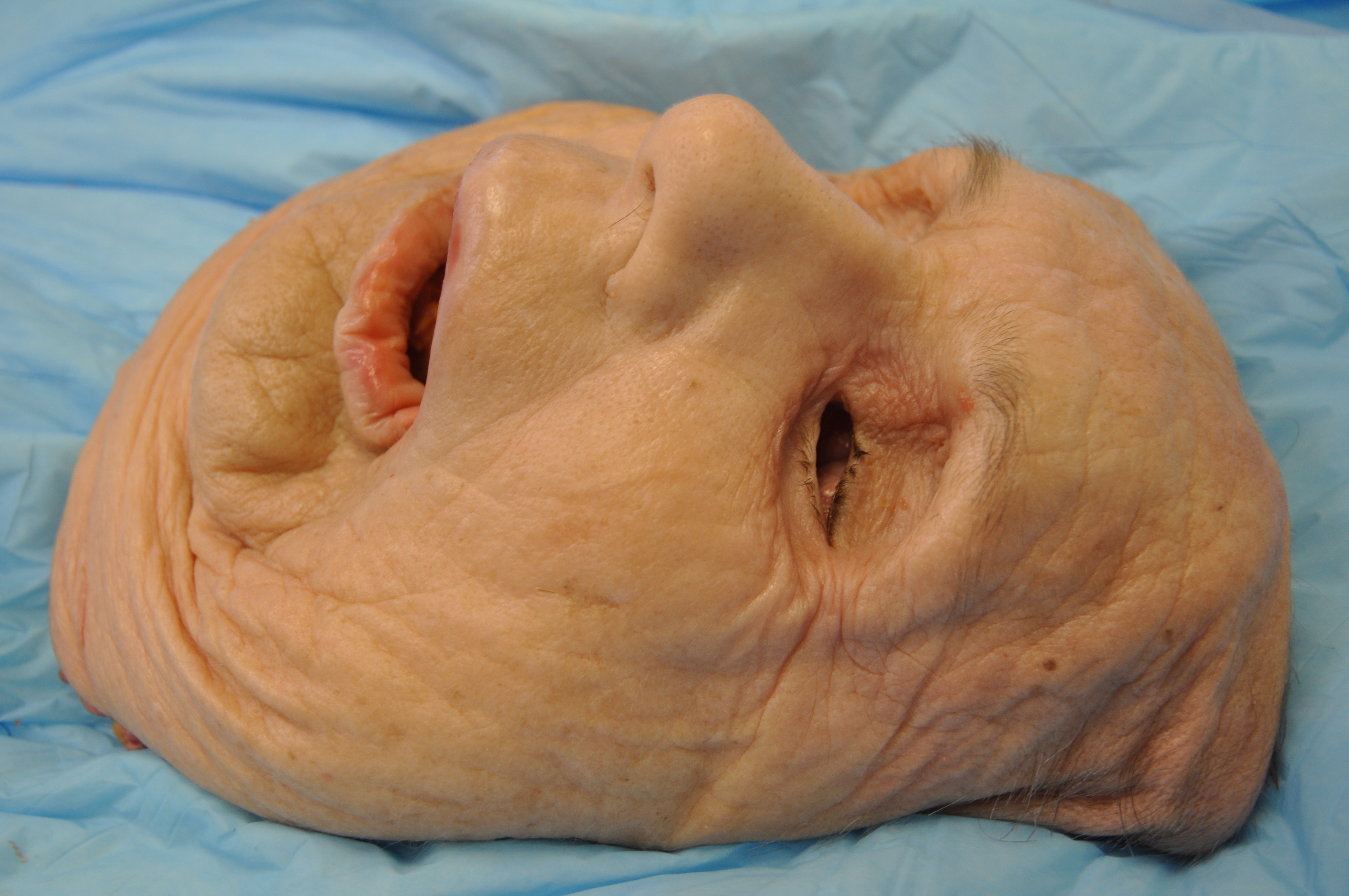|
Back to Annual Meeting Program
Design of a Modified Monobloc Composite Facial Allograft Technique in Facial Reconstruction
Nicholas Bastidas, MD, Patrick Gerety, Jesse Taylor, MD.
Hospital of the University of Pennsylvania, philadelphia, PA, USA.
BACKGROUND:
Composite facial allografts have become increasingly popular in the reconstruction of complex facial defects. Good to excellent aesthetic results can be achieved, particularly when a foundation of donor skeleton has been transferred. We propose using a conventional craniofacial technique (monobloc osteotomy) to transfer a thin monocortical foundation of bone, even in lieu of a skeletal defect, to improve the recipient periorbital and malar aesthetics.
METHODS:
The monobloc osteotomy approach was used to obtain a full facial allograft and modified ex-vivo to a thin monocortical layer and transferred to an anatomic facial skeleton. We have named this the “Masque” flap given the resemblance of the outline of the foundation of bone to a costume worn in masquerade balls.
RESULTS:
The Masque flap was performed on two fresh-frozen cadavers. The total time to harvest and thin the osteomyocutaneous flap was 155 minutes (30 minutes to modify it ex-vivo). The average total surface area was 1060 sq cm2. Periorbital and malar ligaments were maintained as well as the integrity of the canthal tendons
CONCLUSIONS:
The modified monobloc composite facial allograft technique allows transfer of a full facial allograft while maintaining malar projection and excellent shape of the palpebral aperture.  
Back to Annual Meeting Program
|






